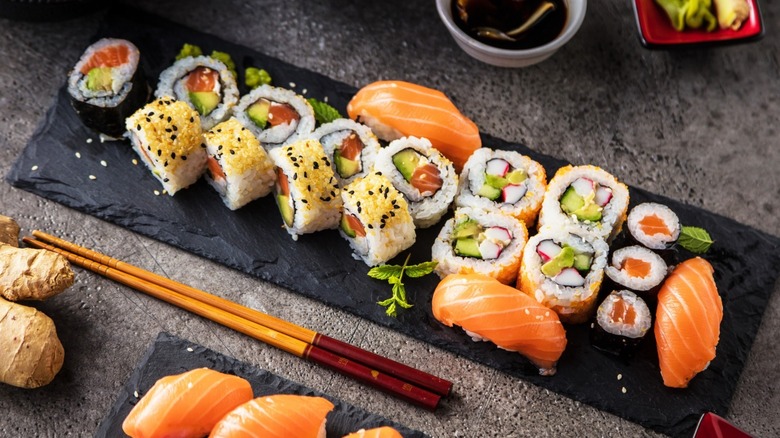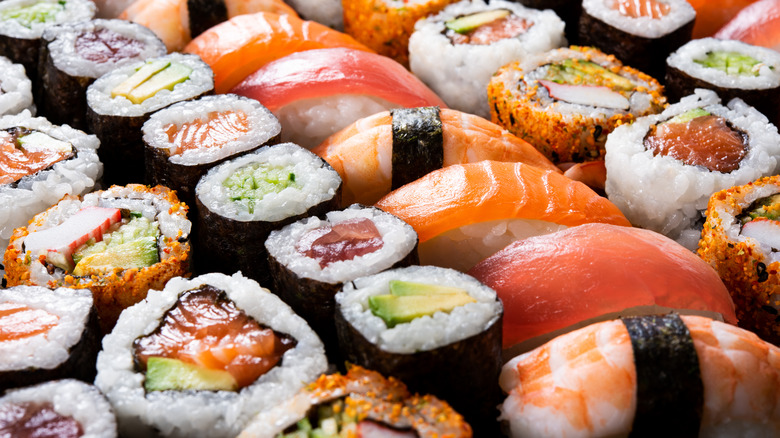How The Sushi Industry Is Adapting To Climate Change
The business of raw fish is booming in the U.S., with IBISWorld projecting a 23.9% growth in sushi restaurants this year. Sushi is a relatively new cuisine in the States, which only became popular around the 1980s, says the Michelin Guide. This $27.5 billion U.S. industry has come a long way since then, with sushi showing up in gas station convenience stores and Michelin-starred restaurants.
Many home cooks may have learned to ask the fishmonger what's fresh rather than entering the market intending to leave with halibut. Yet, in a sushi restaurant, we expect to see our favorites on the menu — spicy tuna, unagi, rainbow roll — at all times. This expectation creates a dilemma for chefs who want to give the customer what they want, yet need to manage their moral obligation to buy sustainable seafood.
Over the past decade, the meat industry has faced a similar challenge with its impact on global warming. The raising of livestock represents 14.5% of total greenhouse gasses emitted into the atmosphere. Cattle are responsible for 65% of that number (via the Food and Agriculture Organization of the United Nations). The private sector responded to this problem, replacing items like hamburgers and chicken nuggets with processed doppelgängers made from legumes and other vegetarian ingredients. As our oceans are overfished and waters get warmer, the question now becomes: How does sushi become more sustainable?
What sustainable sushi looks like
When Jay Huang, chef at Austin's Lucky Robot Japanese Kitchen, took steps toward sustainably sourcing fish, he removed unagi (freshwater eel) from his menu, he told Bon Appétit. Although Huang found suitable replacements for other fish, eel was difficult. Diners rejected his attempt to replace unagi with catfish or American eel for taste and cost, respectively, leaving the chef to grapple with keeping his business afloat while acting responsibly. The dilemma is pressing: Decider reports that David Chang examines the sushi industry in "The Next Thing You Eat." The show reveals that overfishing could cause several varieties of fish to soon become extinct, "starting with salmon in 2049."
Bon Appétit says that restaurants like Rosella in NYC have successfully responded to the issue. The eatery's menu changes according to what local anglers have caught instead of relying on mega-suppliers like True World. Patrons, eager to try something different, are happily introduced to new fish like porgy, not often seen in sushi restaurants.
Another approach is vegan sushi, which is entering the market similarly to plant-based meat, but more slowly. The Los Angeles Times gave faux crab and fish cakes high marks in texture and taste, whereas "raw" imitation tuna had some work to do. Though carnivorous customers may not have embraced sustainable and vegan sushi options as readily as they have other proteins, they may need to adjust their expectations: The supply of the most popular sushi fish is running low, and change is on the way.

